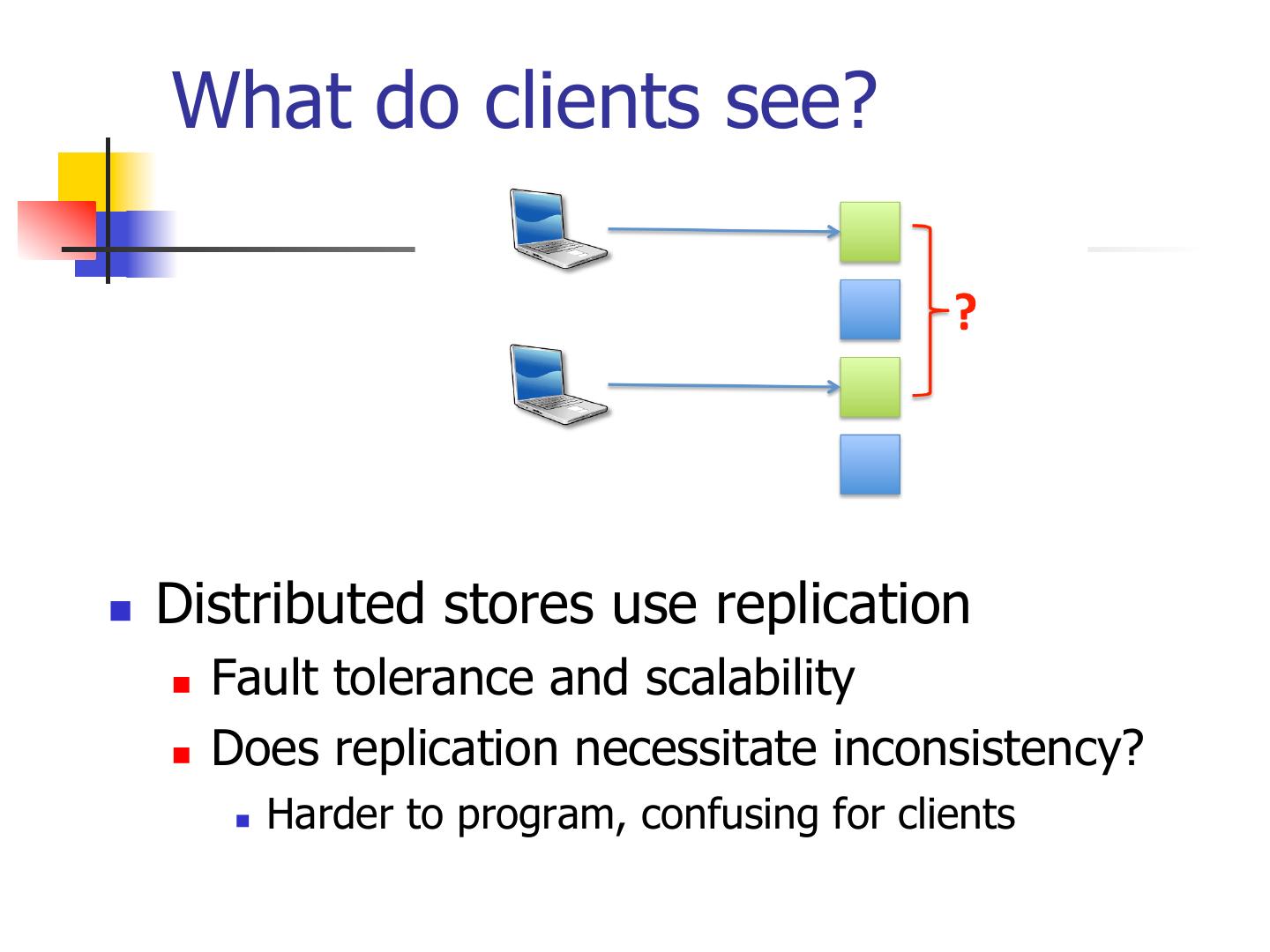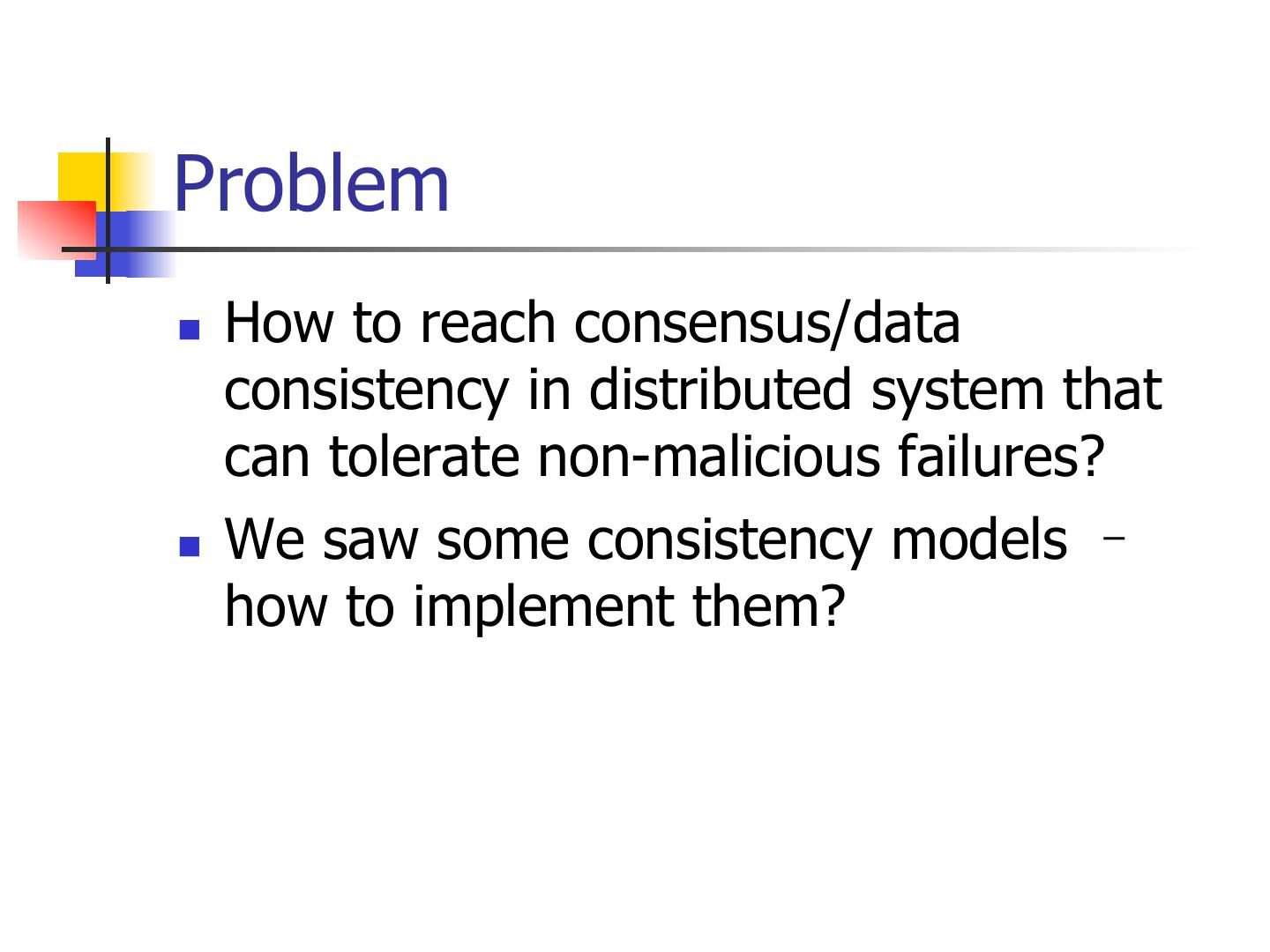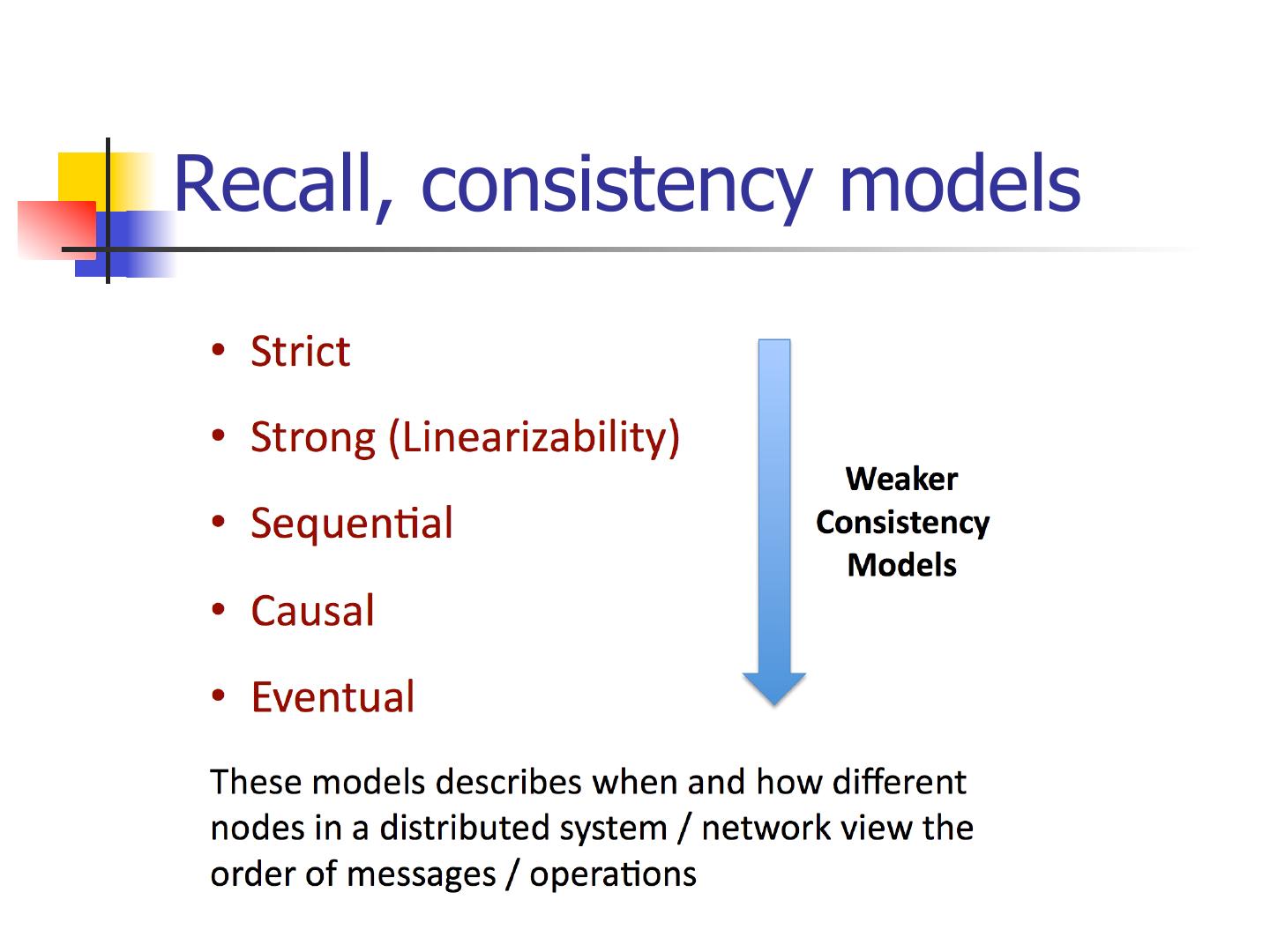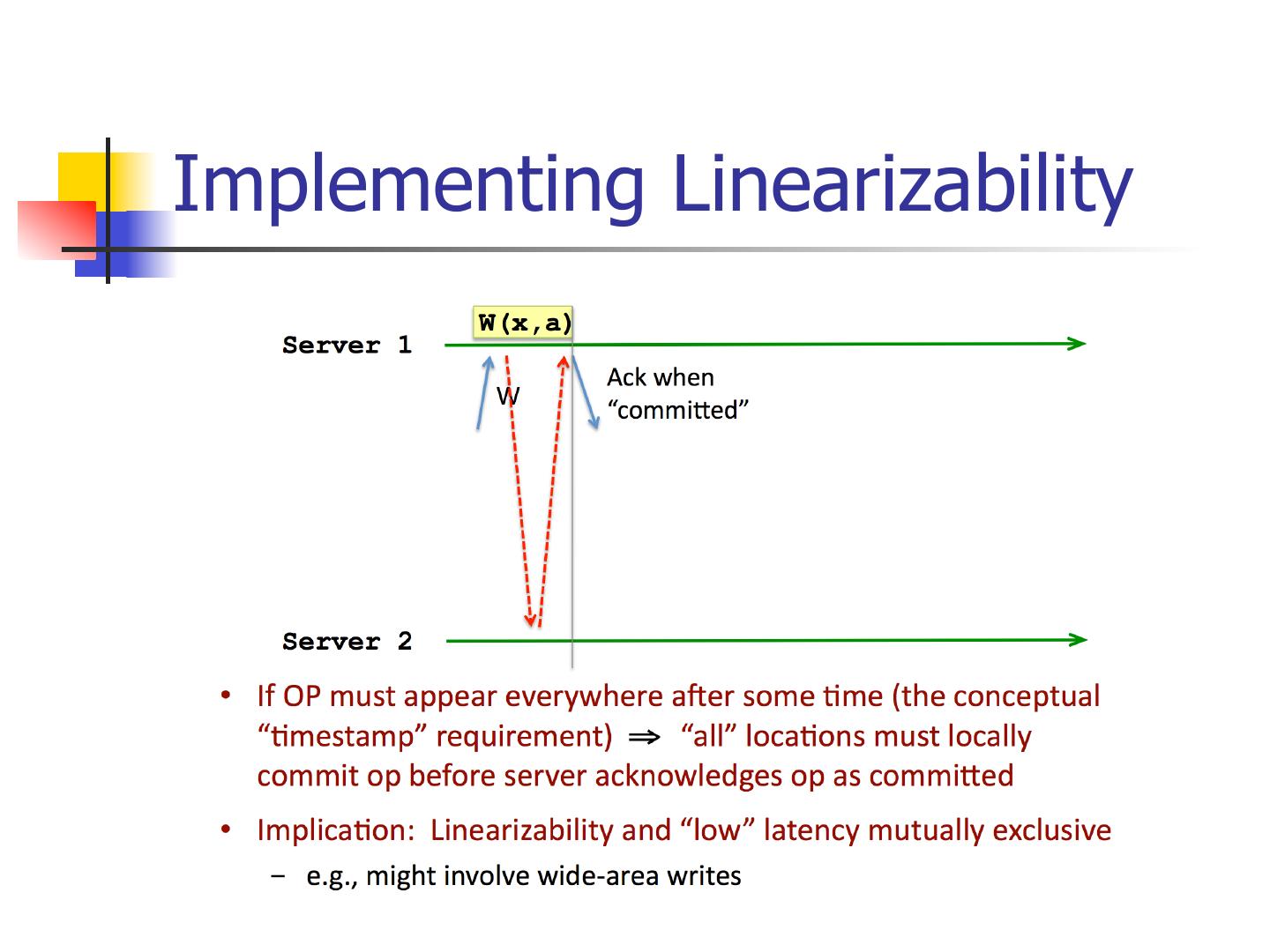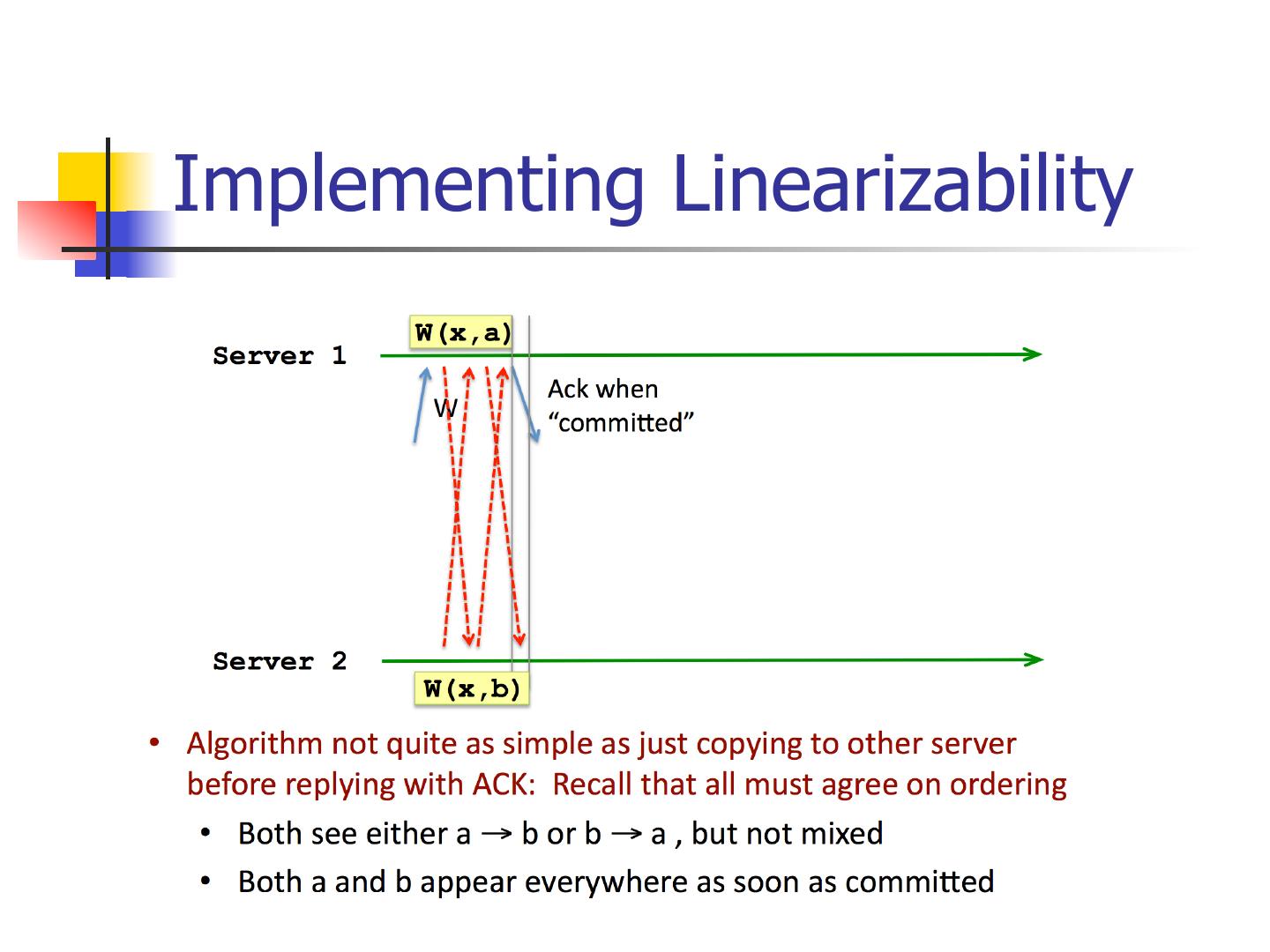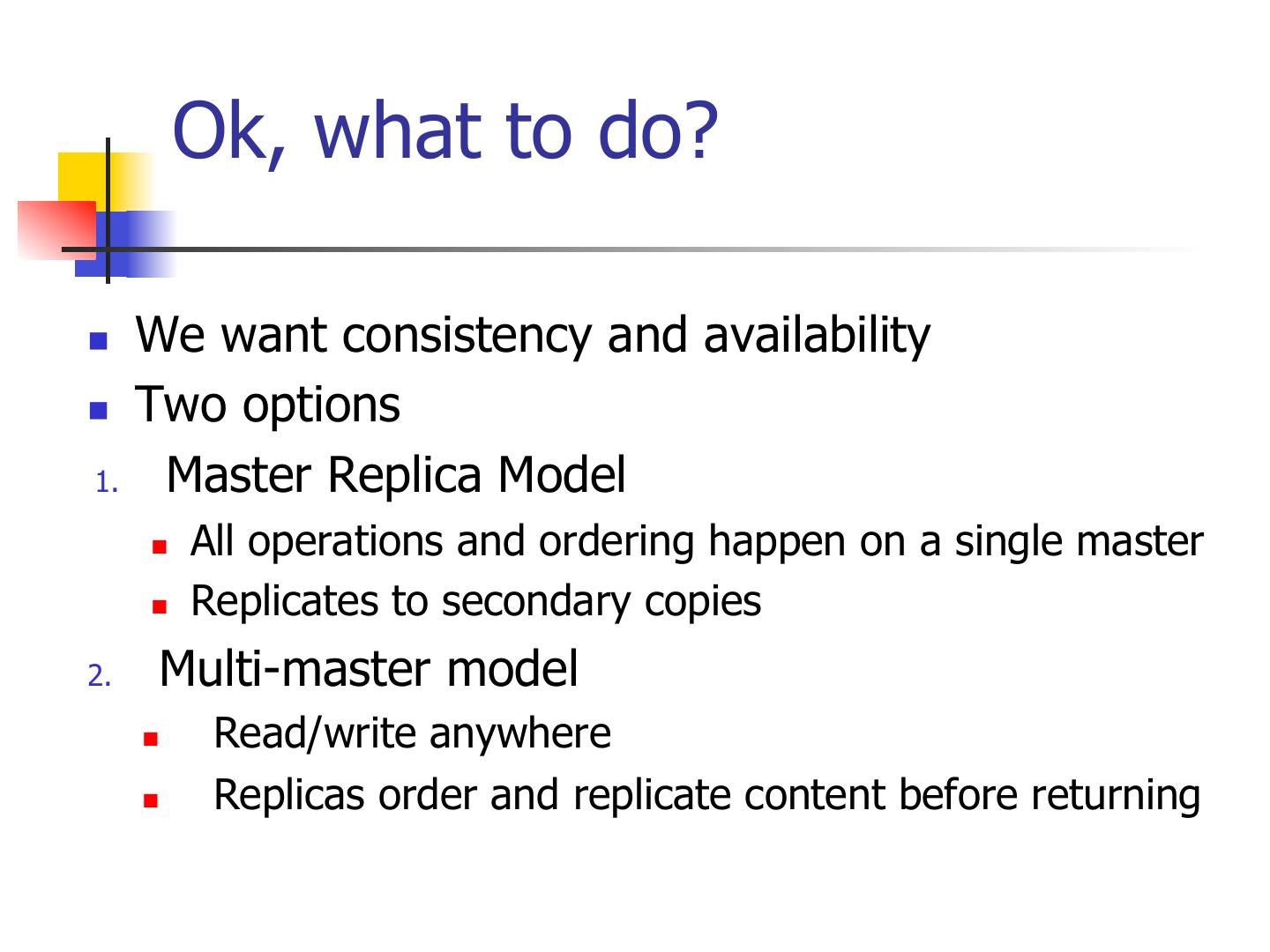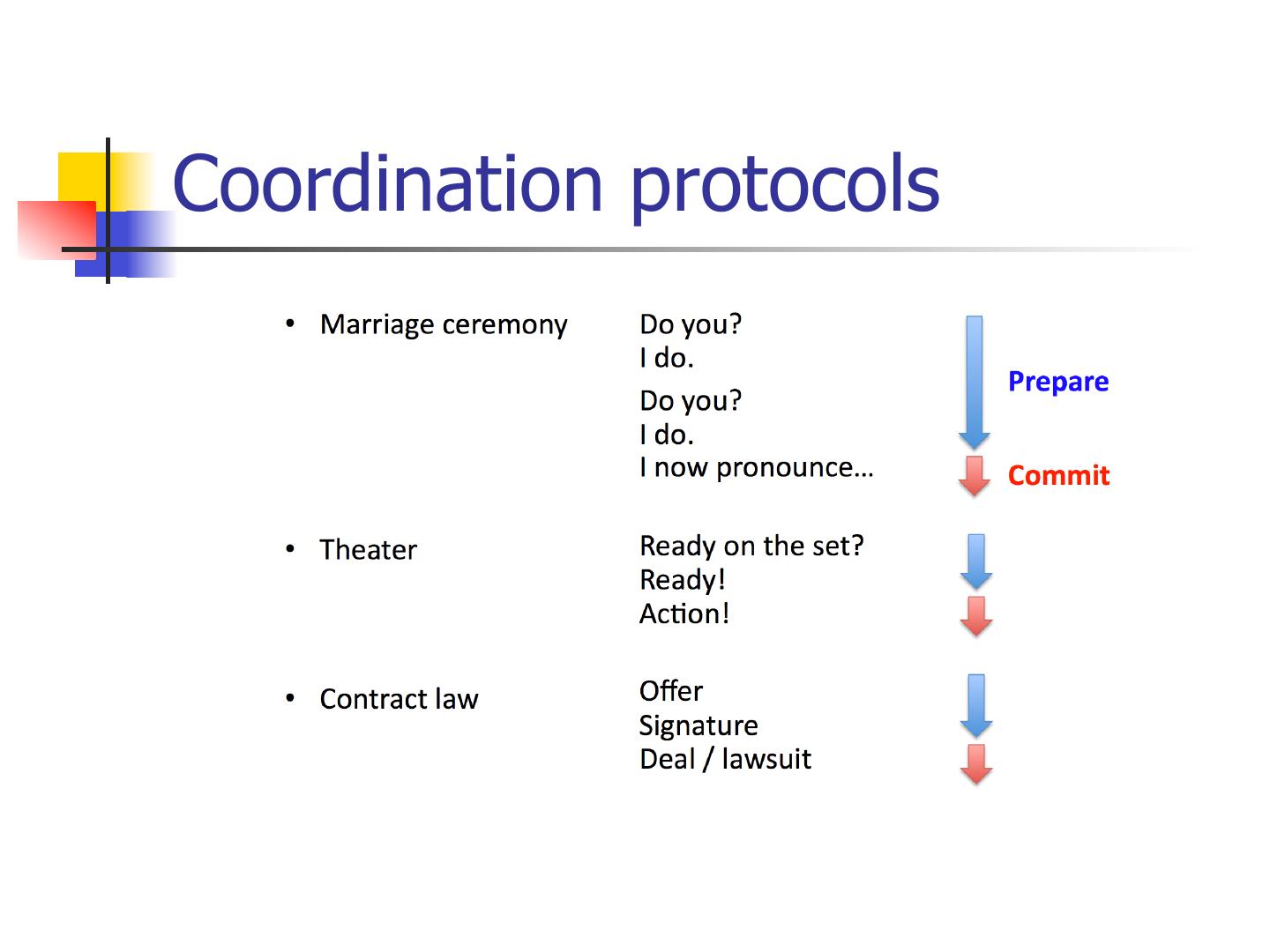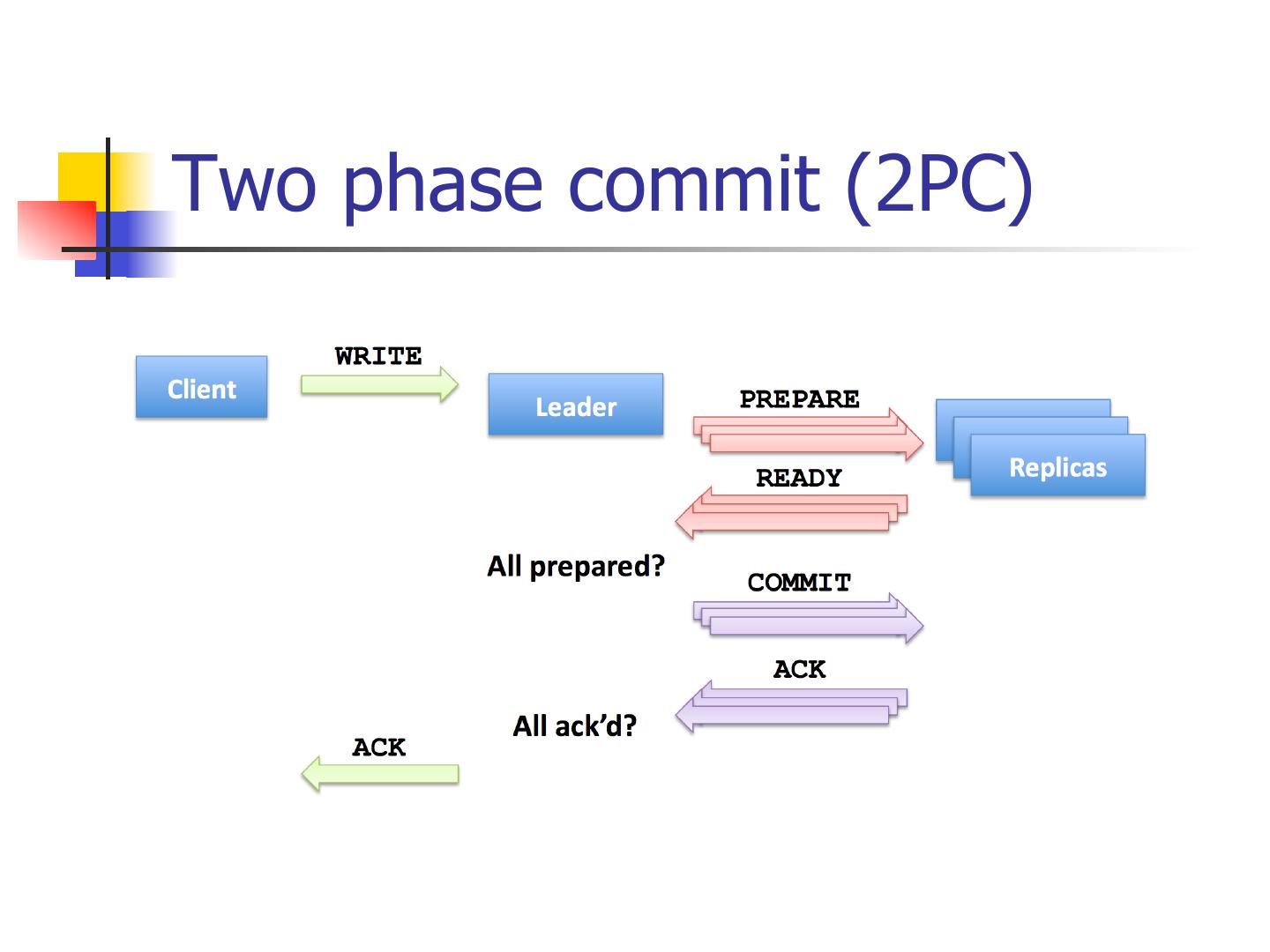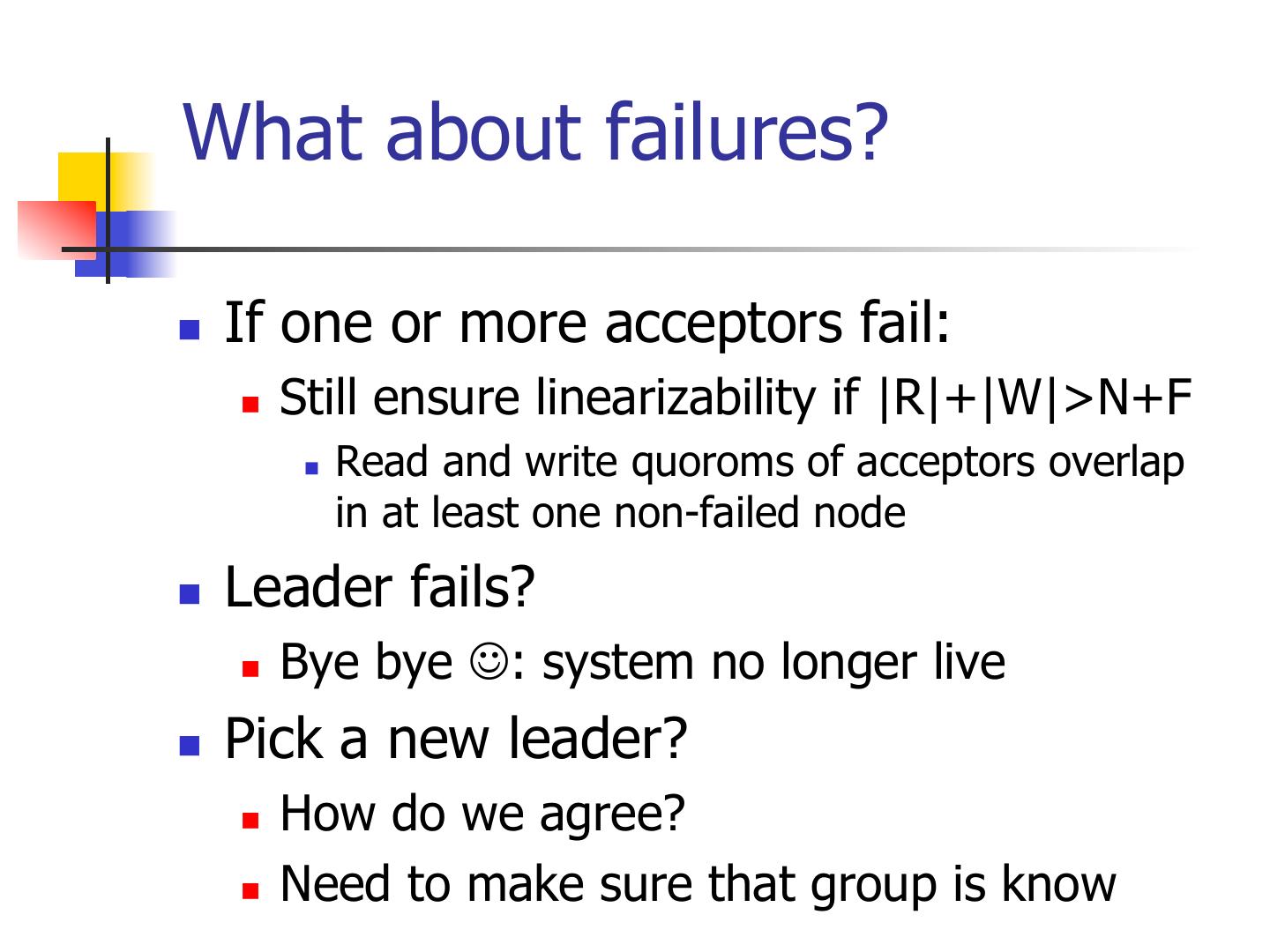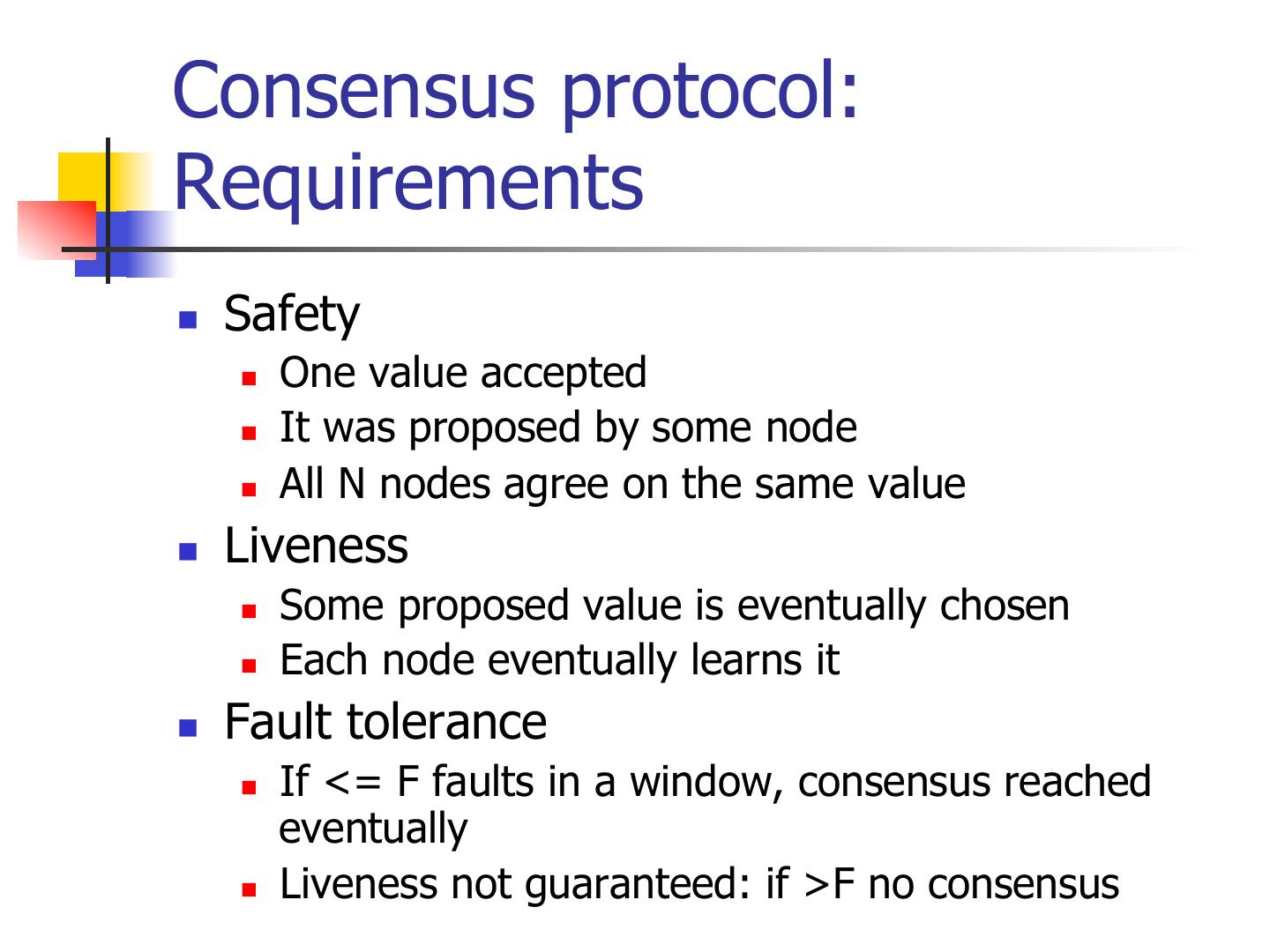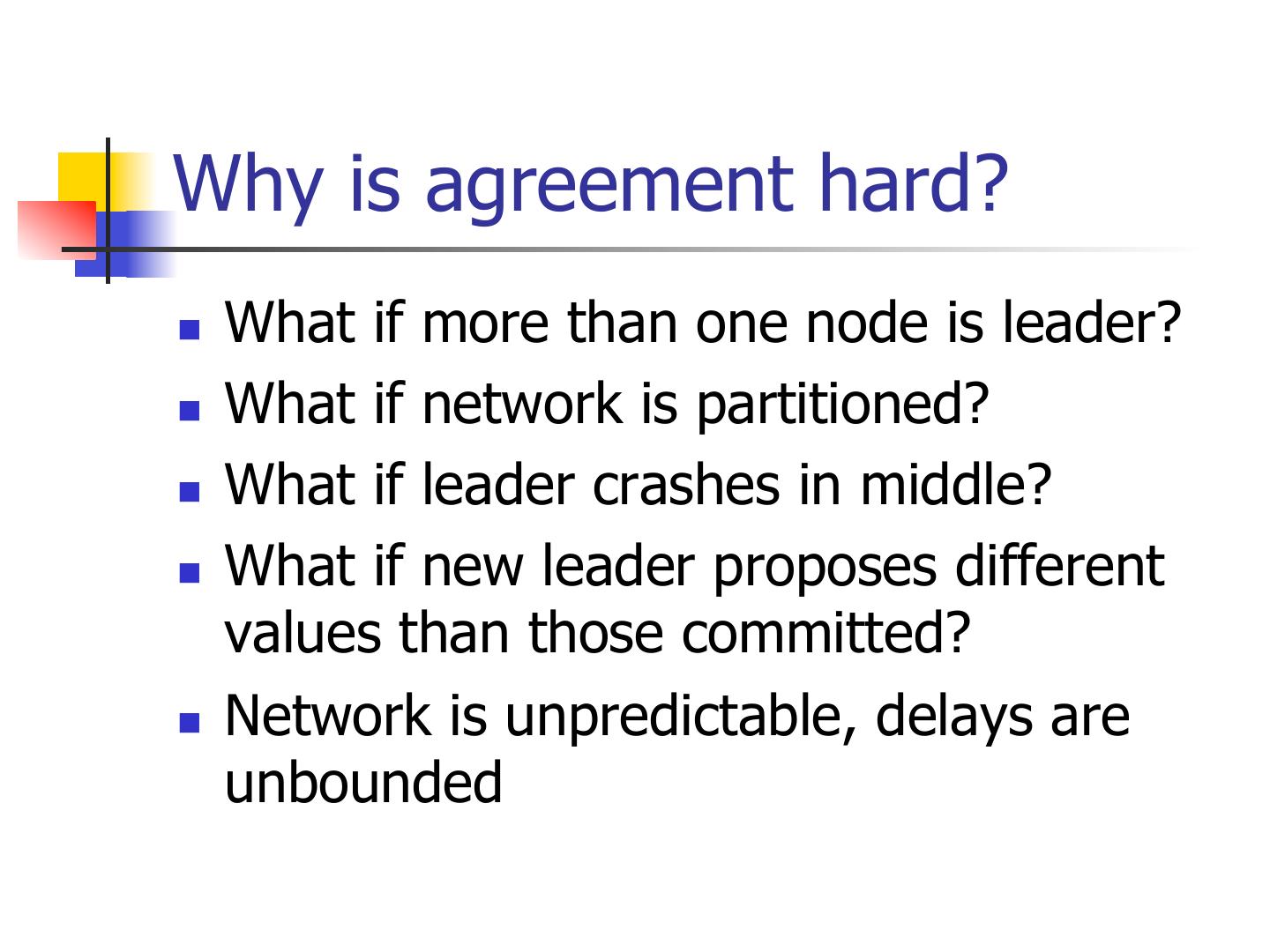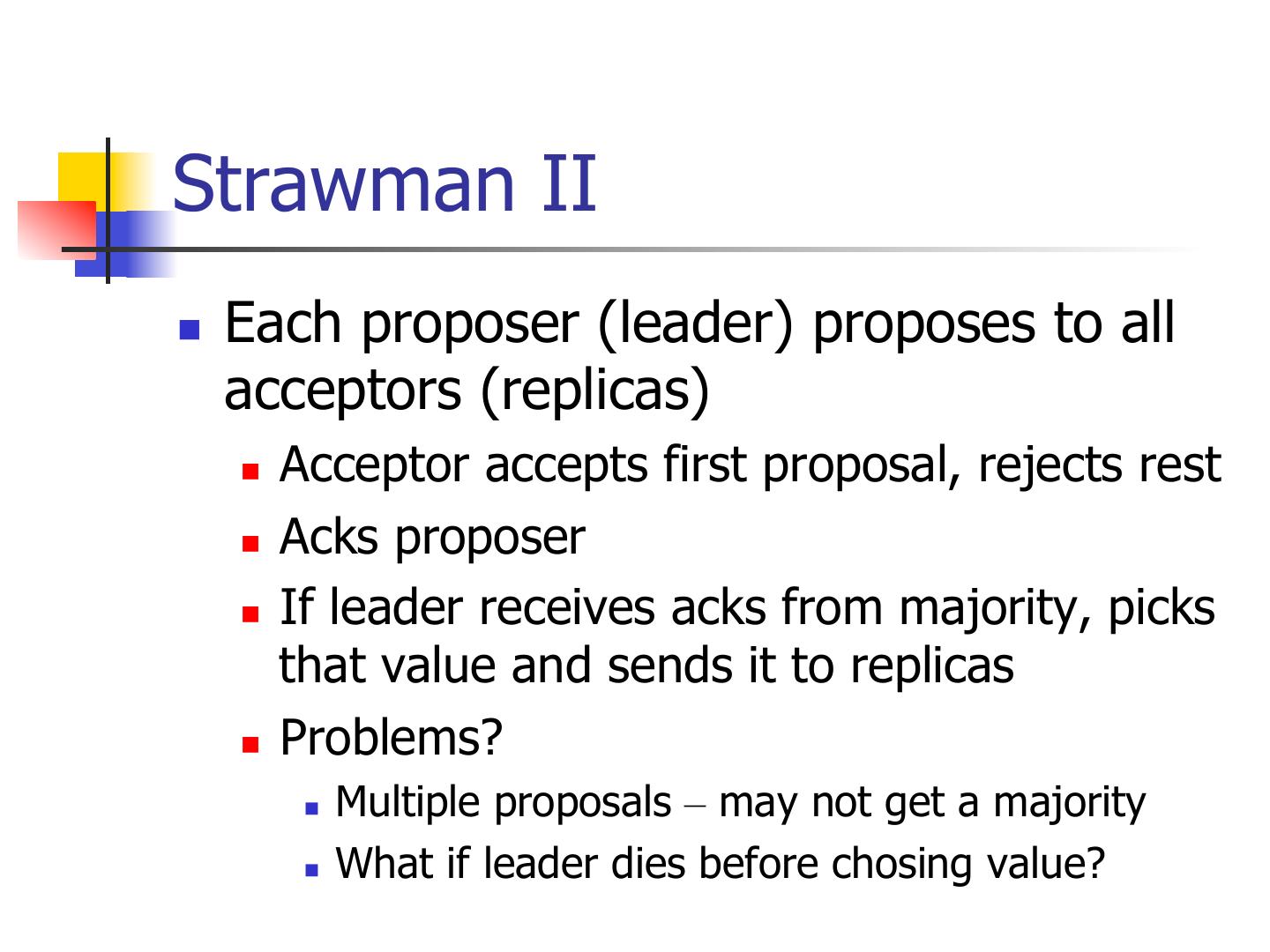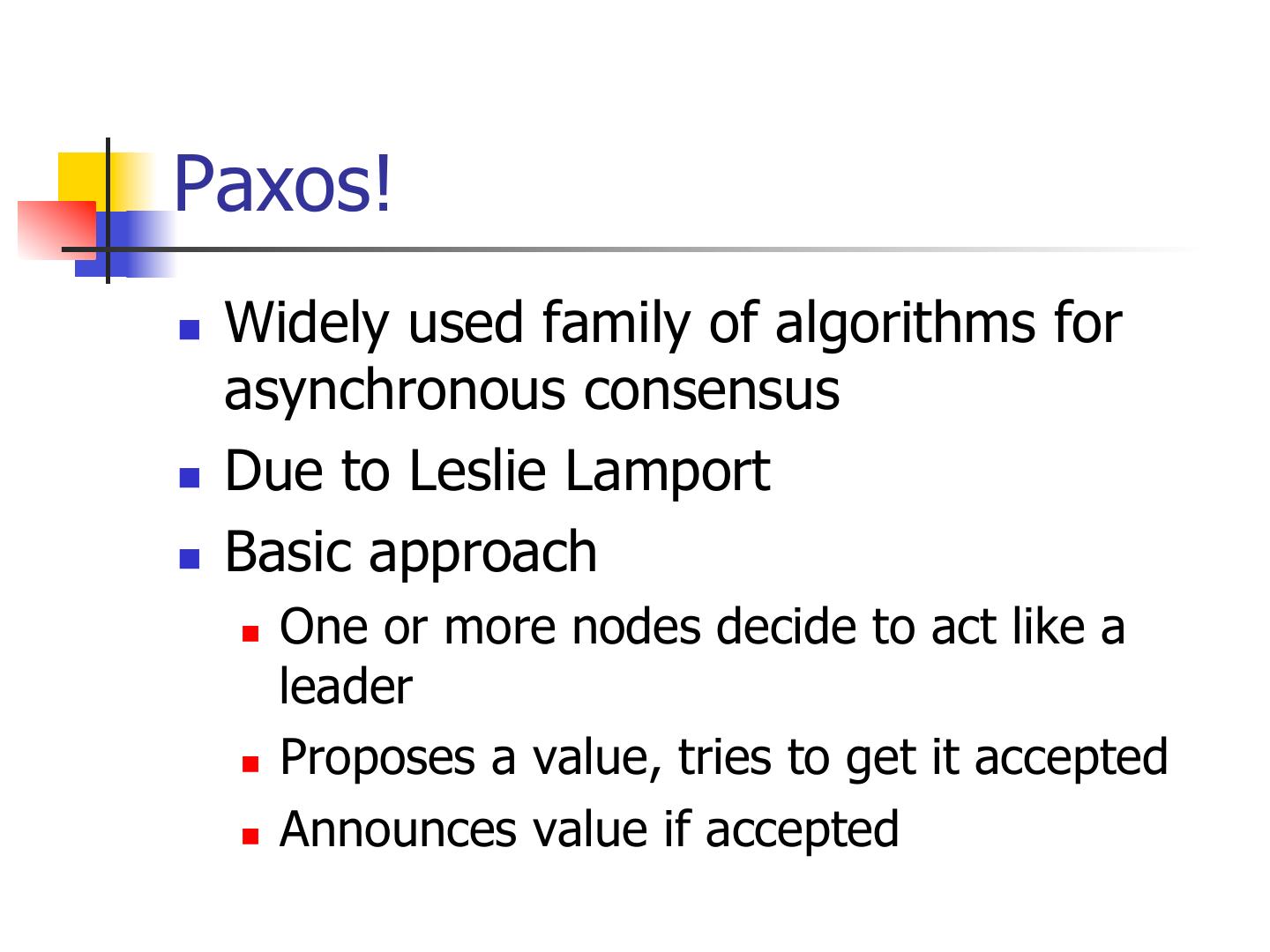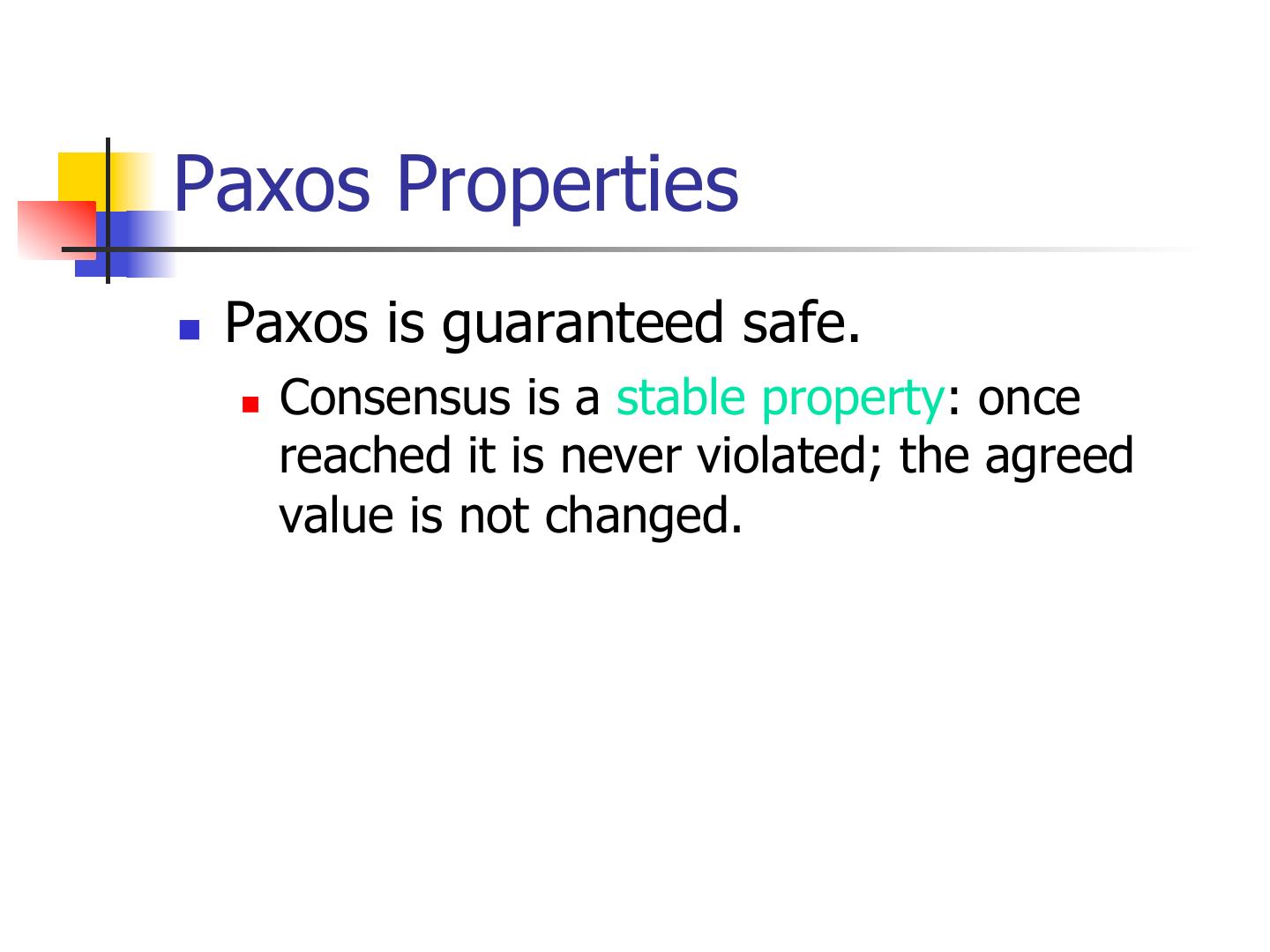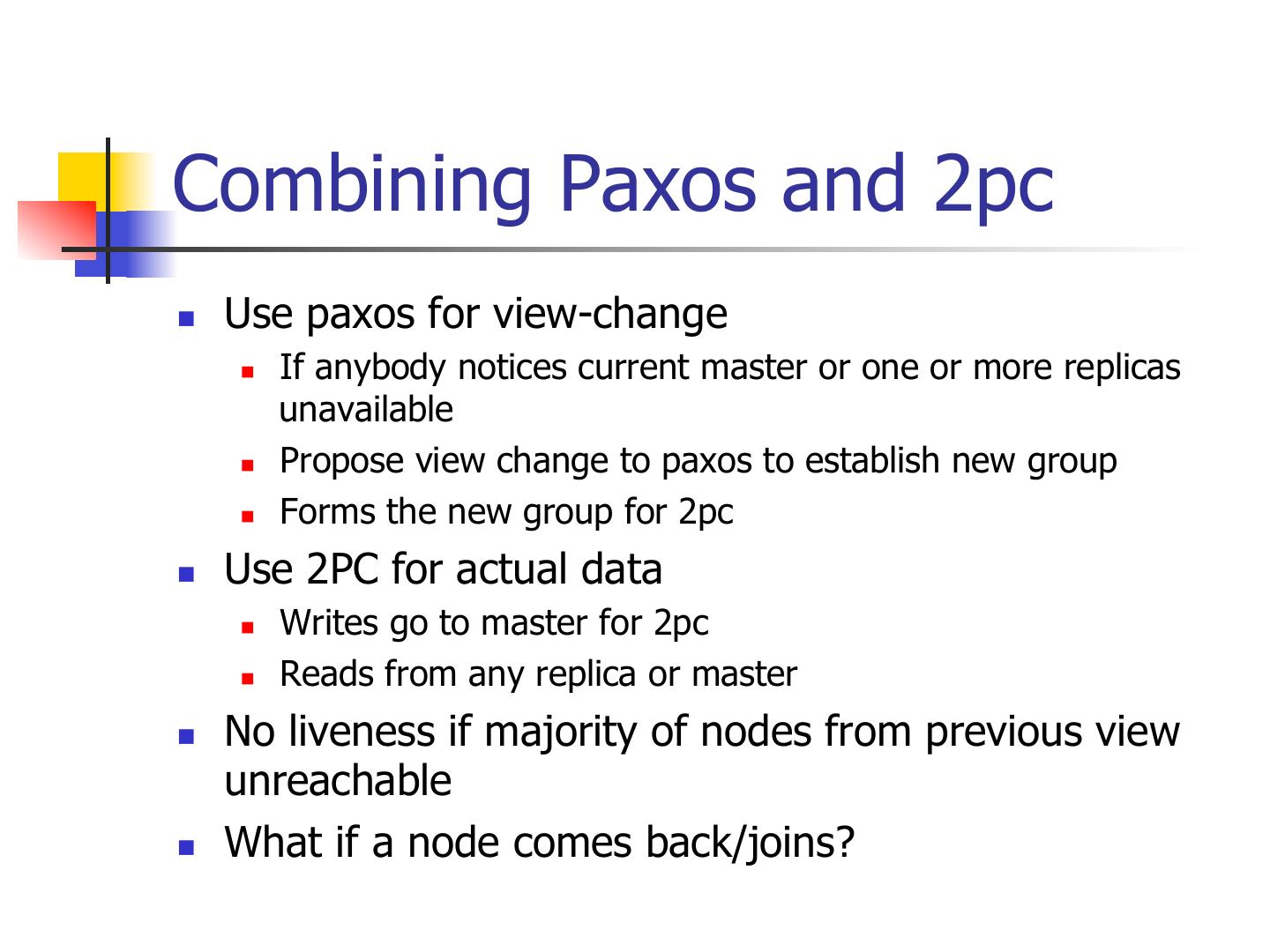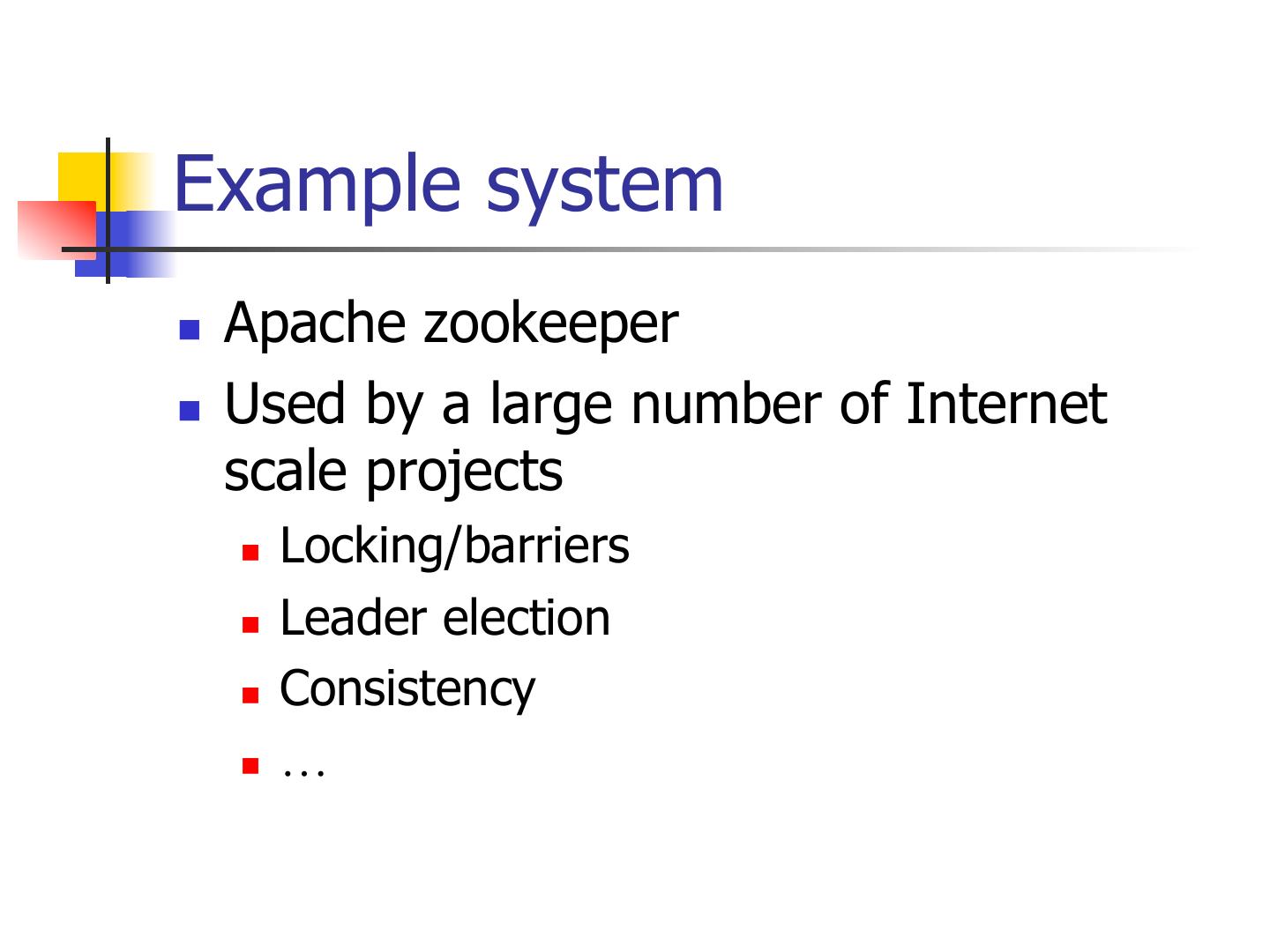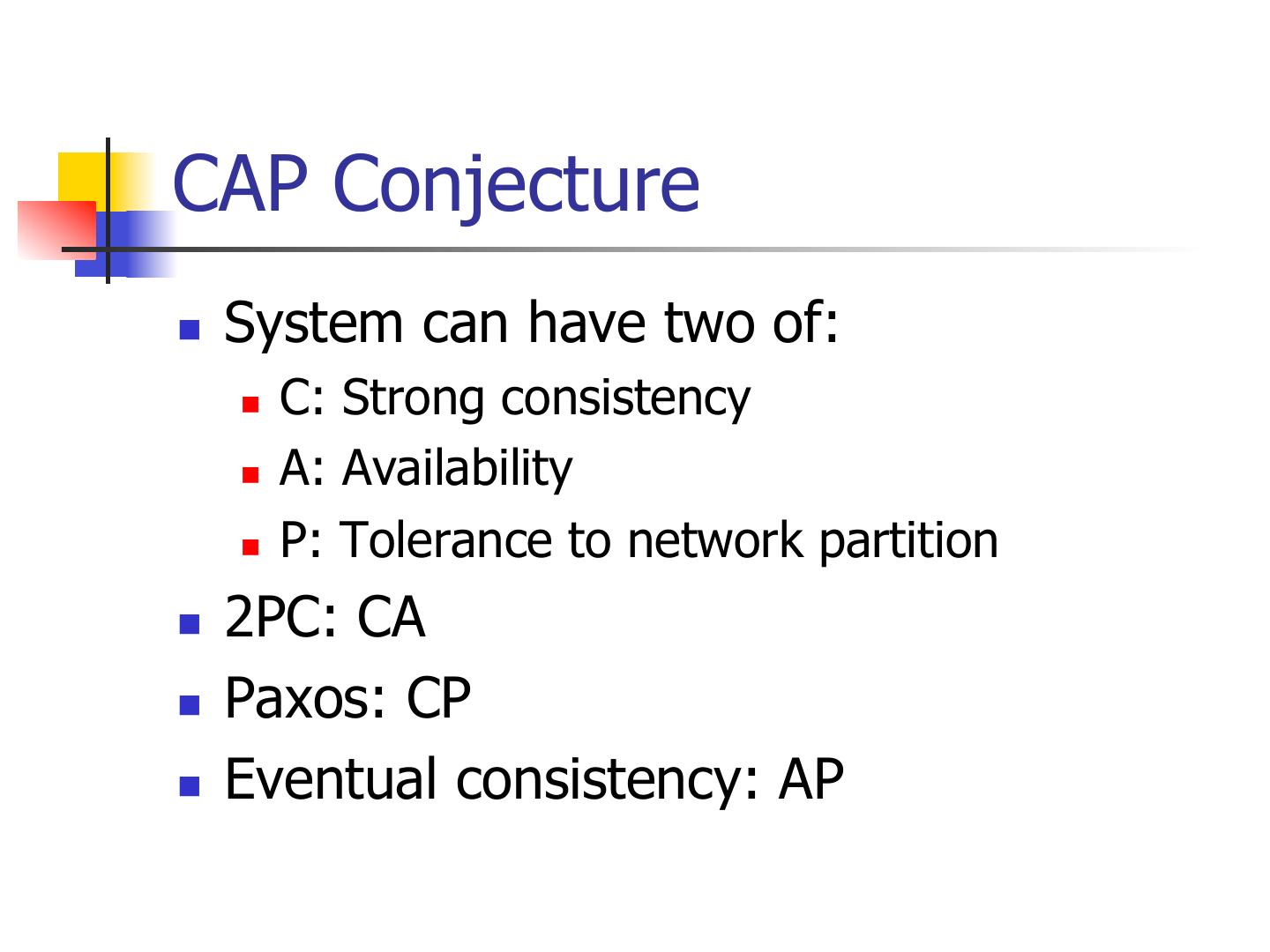- 快召唤伙伴们来围观吧
- 微博 QQ QQ空间 贴吧
- 文档嵌入链接
- 复制
- 微信扫一扫分享
- 已成功复制到剪贴板
一致性的实现
展开查看详情
1 .Implementing Consistency -- Paxos Some slides from Michael Freedman
2 . What do clients see? n Distributed stores use replication n Fault tolerance and scalability n Does replication necessitate inconsistency? n Harder to program, confusing for clients
3 .Problem n How to reach consensus/data consistency in distributed system that can tolerate non-malicious failures? n We saw some consistency models – how to implement them?
4 .Another perspective n Lock is the easiest way to manage concurrency n Mutex and semaphore. n Read and write locks. n In distributed system: n No master for issuing locks. n Failures.
5 .Recall, consistency models
6 .Implementing Linearizability
7 .Implementing Linearizability
8 . Ok, what to do? n We want consistency and availability n Two options 1. Master Replica Model n All operations and ordering happen on a single master n Replicates to secondary copies 2. Multi-master model n Read/write anywhere n Replicas order and replicate content before returning
9 .Coordination protocols
10 .Two phase commit (2PC)
11 .What about failures? n If one or more acceptors fail: n Still ensure linearizability if |R|+|W|>N+F n Read and write quoroms of acceptors overlap in at least one non-failed node n Leader fails? n Bye bye J: system no longer live n Pick a new leader? n How do we agree? n Need to make sure that group is know
12 .Consensus protocol: Requirements n Safety n One value accepted n It was proposed by some node n All N nodes agree on the same value n Liveness n Some proposed value is eventually chosen n Each node eventually learns it n Fault tolerance n If <= F faults in a window, consensus reached eventually n Liveness not guaranteed: if >F no consensus
13 .Given desired F, what is N? n Crash faults need 2F+1 processes n Byzantine faults (malicious) need 3F+1 processes n i.e., some replicas are trying to intentionally lie to prevent consensus or change the value
14 .Why is agreement hard? n What if more than one node is leader? n What if network is partitioned? n What if leader crashes in middle? n What if new leader proposes different values than those committed? n Network is unpredictable, delays are unbounded
15 .Strawman solution I n One node X designated as acceptor n Each proposer sends its value to X n X decides one value and announces it n Problem? n Failure of acceptor halts decision n Breaks fault-tolerance requirement!
16 .Strawman II n Each proposer (leader) proposes to all acceptors (replicas) n Acceptor accepts first proposal, rejects rest n Acks proposer n If leader receives acks from majority, picks that value and sends it to replicas n Problems? n Multiple proposals – may not get a majority n What if leader dies before chosing value?
17 .Paxos! n Widely used family of algorithms for asynchronous consensus n Due to Leslie Lamport n Basic approach n One or more nodes decide to act like a leader n Proposes a value, tries to get it accepted n Announces value if accepted
18 .Paxos has three phases
19 .Example
20 .Paxos Properties n Paxos is guaranteed safe. n Consensus is a stable property: once reached it is never violated; the agreed value is not changed.
21 .Paxos Properties n Paxos is not guaranteed live. n Consensus is reached if “a large enough subnetwork...is non-faulty for a long enough time.” n Otherwise Paxos might never terminate.
22 .Combining Paxos and 2pc n Use paxos for view-change n If anybody notices current master or one or more replicas unavailable n Propose view change to paxos to establish new group n Forms the new group for 2pc n Use 2PC for actual data n Writes go to master for 2pc n Reads from any replica or master n No liveness if majority of nodes from previous view unreachable n What if a node comes back/joins?
23 .Example system n Apache zookeeper n Used by a large number of Internet scale projects n Locking/barriers n Leader election n Consistency n …
24 .CAP Conjecture n System can have two of: n C: Strong consistency n A: Availability n P: Tolerance to network partition n 2PC: CA n Paxos: CP n Eventual consistency: AP




